#palaemonetes paludosus
Note
sorry i didnt mean to send you just "yay"
so ill make it you by asking you something
whats the most fascinating shrimp youve seen
I think all of them are fascinating + deserve everything <3 but the one who stands out to me is the Glass Shrimp, or Palaemonetes paludosus!
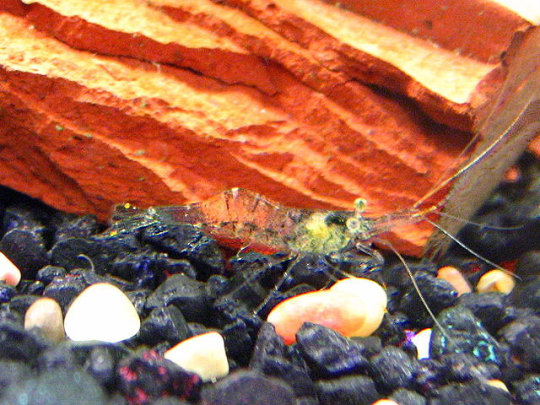
[Image description: Photograph of an glass shrimp in a freshwater aquarium. The shrimp is mostly transparent with its viscera visible, which is different tones of greenish-yellow, as it swims through black and white decorative rocks. End ID]
#glass shrimp#palaemonetes paludosus#they’re also called ghost shrimps >:3c#bottle breaking (inbox emptying)#moth9198
2 notes
·
View notes
Photo


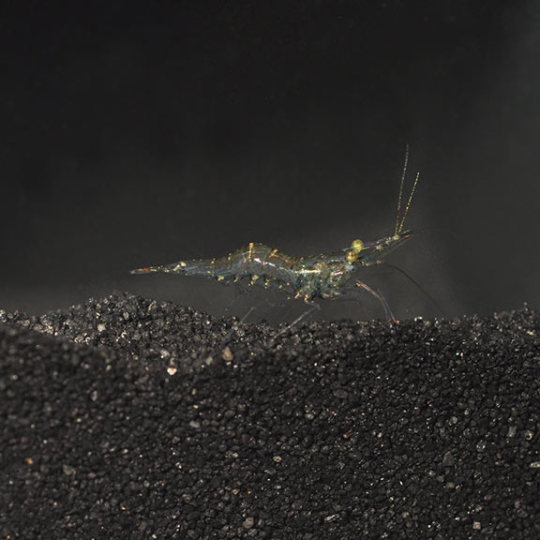


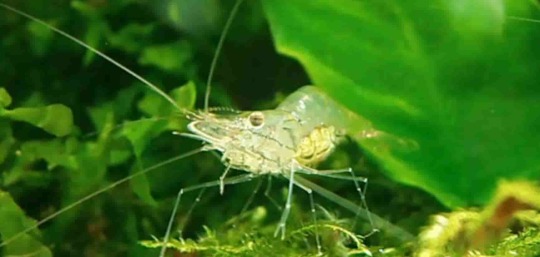
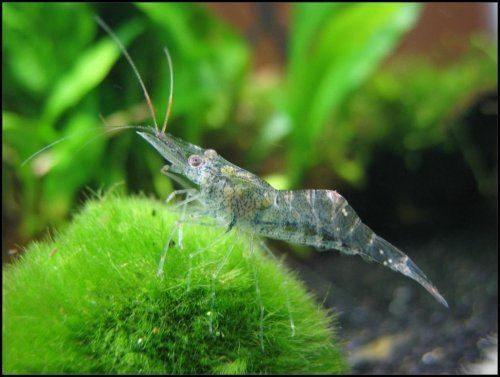
Palaemonetes paludosus better known as ghost shrimp, glass shrimp, and eastern grass shrimp, is a species of freshwater shrimp native to the southeastern United States. Here they can be found throughout freshwater ponds, lakes, and streams east of the Appalachian Mountains from Florida all the way up into New Jersey. They have also been introduced throughout California, Mexico, Louisiana, Texas, and Oklahoma. They are a primarily nocturnal and some what social species which lives in large groups spending there time amongst beds of various aquatic vegetation where they feed upon algae, plankton, the aquatic plants themselves, detritus, and smaller invertebrates chiefly aquatic insects and there larvae. Ghost shrimp are themselves preyed upon by various fish, crayfish, water birds, turtles, and amphibians. Reaching around 1-2 inches (25 – 50mm) in length, ghost shrimp sport a notably transparent carapace and internal tissues allowing one to see its internal organs through its integument. This clearness provides a high degree of camouflage especially in cloudy or muddy water, and is the reason for there common names. The breeding season of these shrimp varies by location and water temperature, during said time the females ovaries take on a greenish color. After mating the female will lay 8 to 35 eggs, and like many crustaceans the mother will carry her developing eggs on their abdomen until they hatch some 2 months later. Ghost shrimp larval development is short, consisting of three stages, and under ideal conditions a ghost shrimp may live upwards of a year.
#ghost#shrimp#glass#eastern#eastern glass shrimp#ghost shrimp#glass shrimp#crustacean#North America#appaliachia#freshwater#pleistocene#pleistocene pride#palaemonetes paludosus
1 note
·
View note
Text
Shrimp of the Day #2
Palaemonetes paludosus
also known as the ghost shrimp, glass shrimp, and eastern grass shrimp


5 notes
·
View notes
Note
What are some good shrimp to keep for people who’ve never kept them before?
Shrimp in general tend to be not too tricky, though of course as with all animals there's a learning curve and some are more sensitive than others. Ultimately I would recommend looking at your options and deciding which interests you the most and go from there to see if their care is doable for you.
Look at their native habitat, speak to keepers and breeders, join some specialty shrimp groups or forums, etc.
Here's a list of some species to consider:
-Amano shrimp (Caridina multidentata)
-Glass/ghost shrimp (Palaemonetes paludosus)
-Opae ula (Halocaridina rubra)
-Bee shrimp (Caridina cantonensis)
-Cherry shrimp (Neocaridina davidi)
-Bamboo shrimp (Atyopsis moluccensis)
12 notes
·
View notes
Text
Time for POND TALK
So last year I had the idea to keep neocaridina shrimp in my pond. I live in USDA zone 7b, which is pretty warm and I figured a heater would be sufficient for our mild winters. If you follow me on TikTok you'll know this went well at first, but later a sudden unexpected cold snap before I had the heater put an end to this experiment. But this wouldn't have worked anyway: I was very rudely informed of my folly by a severe ice storm that knocked out our power for a week and iced over the pond. Such power outages aren't unusual, especially in the winter, so even a high powered heater can't be counted on. The fish are native fathead minnows and don't even go torpid when their water freezes over, but the shrimp would not have survived. So this past spring I didn't restock.
There is however, a species of tiny shrimp native to this area! I knew this to begin with, but the problem is they're extremely difficult to obtain in hobbyist numbers. They're a type of grass/glass/ghost shrimp, and there are two such species in the US: Palaemonetes paludosus, and Palaemonetes kadiakensis. P. paludosus are found far to the south, preferring warm temperatures and having no real cold hardiness. P. kadiakensis on the other hand ranges as far north as the great lakes. You can buy "ghost shrimp" at pet stores, but they're usually P. paludosus, the Florida grass shrimp. It's very rare for any seller to state what specific species they have though, and in my research I've read of people buying what they thought were P. kadiakensis (aka PK shrimp) but they turned out to be Florida grass shrimp, or even some other variety of prawn entirely. For my situation, there can't be any substitutions, so I had given up on it. Grass shrimp are usually only bought to be used as food for bigger animals, or fishing bait, and people buying them for that don't usually care what specific species they get, so there's little incentive for proper labeling.
More recently though I found one lone eBay seller with labeled PK shrimp, who raises them in an outdoor pond not far from me. They state that their pond freezes over in winter, which implies they do in fact have PKs. There is still some question of whether this is a good idea or not - their pond is no doubt much larger than mine, and even though the bottom of the Big Puddle is below the frost line and has a heater down there, it isn't as warm as a big pond. But try as I might I can't find much useful information. This is one of those things that you have to experiment with on your own. The reason I tried the neocaridina was because I read of people keeping them outdoors further north of me!
Another thing I'm looking into is daphnia, daphnia magna specifically. They're good at eating the algae that cause green water, and they'd make good food for all the dragonflies and tadpoles I get in the summer. Maybe my fish fry would get a chance to survive if they weren't a primary food source for said predators. Seriously, I did have a bunch of fry this year, but only two survived because there are so dang many dragonfly nymphs! The dragonflies kept the American toads from creating a Biblical plague on my backyard though and I appreciate that. I had three toad spawns, one failed for some reason but the other two hatched thousands of tadpoles. I really enjoyed watching them grow, but it wouldn't have been much fun if they'd all survived to adulthood. I don't think a suburb can support 4,000 adult American toads.
Before I can do anything with crustaceans though, I have to wait for my copper test to get here. Crustaceans are very sensitive to copper, which is in algaecide, which I had to use a lot of this summer when the tadpoles' addition of organic matter and hot temperatures caused an explosive algal bloom. Changing out the water isn't a big deal and I'll have to partially drain the pond in the spring anyway, but I want to know exactly what the levels are. I'll have to drain the pond to divide the water lilies, btw: I started with three and this year each of them made at least two babies!
2 notes
·
View notes
Text
VA Native Fish Hunting - 14

Today was a fun day down on the Potomac. I went specifically to capture Striped Killifish (no luck) but also found shark teeth and petrified bones. Oh, and found some other aquatic stuff. So, that's always neat.

For the first hour I didn't catch anything. Hard time finding any fish at all, probably because it was high tide. Most of the fish I saw last time were around a sand bar which was no longer present. Once I started netting around some seaweed randomly (looking for Gobies) I started catching Eastern Grass Shrimp (Palaemonetes paludosus). Love these little guys.

A handful of the shrimps I caught were females, berried with lots of eggs. I tried not to pester them too much, but who can resist the opportunity to take a picture? I've heard Palaemonetes needs freshwater and brackish to breed and raise eggs - given where I found the berried females (near the inlet) there might be some truth to that.

Okay, well. They were pretty common in some areas. I was catching 4 or 6 in single swipes at some locations. I am tempted to use them in a biotope tank someday!

I never was able to find any Striped Killifish, but I did eventually catch this Mummichog (Fundulus heteroclitus). These are also brackish to full marine and are very hardy - I have one already in my saltwater tank after all.

I managed to catch 6 of them - 3 of which were suffering from leeches. I transitioned the 'chogs to full saltwater (from 1.006) and hoped it would kill off the leeches but nope - still sticking strong. So I removed them with tweezers. Not a fun way to spend a day but yknow. I think my existing Mummichog will love the company.
6 notes
·
View notes
Note
What are some Brackish water shrimp for a specific gravity of 1.010
This is a bit trickier because there are some that are sold somewhat commonly, but may not be any that work for you.
Opae'ula or Red Shrimp (Halocaridina rubra) is the darling in the brackish shrimp world - but they are small. Incredibly small. They really are only suited for species only tanks, or maybe with certain snails. Mixing with fish is a no go.
There are also a few glass shrimp (Palaemonetes spp.) species which can tolerate this salinity. P. varians is sometimes sold as a saltwater bait and I've caught P. paludosus at this salinity. But these are cool to cold water only and will try to escape a tropical tank eventually. I don't really recommend either for tropical communities.
0 notes
Text
Which shrimp species are best for beginners? | 4 best starter shrimp
If you're just getting into shrimp keeping it can be a little difficult to figure out which type to get started on with.
There are so many species! So various colors, sizes and different requirements to choose from.
Some are difficult to look after and some are a breeze. Luckily, The Shrimp Farm can help.
Keep reading to determine the 4 very best starter shrimp!
Red Cherry shrimp (Neocaridina davidi var. Red)
Red Cherry shrimp are most likely the most popular dwarf shrimp among both newbies and more capable shrimp keepers.
And once and for all reason! This reddish colored Neocaridina variety isn't too fussy about water values, very easy to breed and quite attractive.

Colors can vary from a good light pink to deep blood vessels red and with smart selective breeding you may easily improve the intensity.
Keep your Red Cherry shrimp in a fully cycled aquarium of for least around five gallons (19L).
If you're interested in breeding your Cherries a single species setup with only shrimp is recommended.
However, these shrimp also do well in relaxing community setups, as they breed very quickly and the casual casualty won't damage the population at all.
Provide your Crimson Cherries with plenty of hiding places, in community tanks especially, and feed a high quality shrimp food.
You can look for a full Red Cherry shrimp caresheet at The Shrimp Farm here.
Amano shrimp (Caridina multidentata)
Amano shrimp are named after the later famous aquascaper Takashi Amano, who first introduce them into the aquarium hobby on a large scale.
Though colorless rather than too exciting to look at, these shrimp are among the most preferred because they are pretty hardy, have a huge appetite for algae and make a great cleaning crew.
They are a little bigger than dwarf shrimp but nonetheless entirely peaceful and an excellent addition to any calm community tank.
The only downside is they are almost impossible to breed in the house aquarium: they hatch as larvae which go through a brackish level where they desire a very specific amount of salt.
After that, they need to be returned to fresh water at specifically the right time.
Keep the Amano shrimp in a heated and cycled aquarium of at least around ten gallons (38L). Much like all shrimp, provide lots of hiding places in the kind of plants, rocks and driftwood.
If there is a lot of algae for the shrimp to eat you don't need to supplement their diet plan all that much but make certain to always have some shrimp food readily available in the event the algae run out.
You can find a full Amano shrimp caresheet at The Shrimp Farm here.
Caridina Japonica Shrimp with eggs Caridina Japonica Shrimp with eggs by carolineccb
Blue Wish shrimp (Neocaridina davidi var. Blue)
Blue Dream shrimp are a blue Neocaridina davidi variety: basically a blue version of Red Cherries.
Their care requirements will be the same, they don't need very particular water values and their striking color makes them an excellent eyecatcher in virtually any shrimp tank.
Like all shrimp in addition they make a good cleaning crew that keeps the aquarium tidy by eating leftover foods and algae.
They can be combined with small, relaxing fish species (provided there are plenty of hiding places) but show themselves more and breed of dog more readily within an invert-only setup with snails and other shrimp.
There are more Neocaridina davidi varieties out there lots, all of them easy to care for and an excellent breeding project for beginners.
Choose Blue Velvets if you're looking for a lighter blue color or possibly a bright Yellow! Merely don't incorporate these shrimp in one aquarium; they carry out interbreed and any offspring will include a brownish wild color.

blue dream shrimp
Ghost shrimp (Palaemonetes sp.)
Ghost shrimp are often sold as cheap foodstuff for larger seafood species but can also make an interesting everlasting addition to the aquarium.
They are upon this list because they are incredibly hardy and will tolerate bad water values a lot better than most other shrimp. A great option if you're just getting started!
'Ghost shrimp' is a good collective brand for various shrimp species in the Palaemonetes genus, thus be sure to purchase from an established seller to avoid ending up with an enormous aggressive river prawn or perhaps brackish variety.
The Shrimp Farm markets Palaemonetes paludosus, which doesn't grow too large and really should work fine generally. Continue to keep your ghost shrimp in a cycled aquarium of at least around 10 gallons.
A relaxing community should work only fine (though bear in mind ghost shrimp can be slightly considerably more aggressive than dwarf shrimp).
Ghost shrimp larvae are tiny and very vulnerable, so if you're interested found in breeding and do not want the young to finish up being eaten a good single-species setup could possibly be the best idea.
Get more information info シュリンプ通販 Shrimp site
0 notes
Text
Which shrimp species are best for beginners? | 4 best starter shrimp
If you're just getting into shrimp keeping it's rather a little difficult to figure out which type to begin with.
There are therefore many species! So various colors, sizes and different requirements from which to choose.
Some are difficult to look after and some are super easy. Luckily, The Shrimp Farm can help.
Keep reading to determine the 4 finest starter shrimp!
Red Cherry shrimp (Neocaridina davidi var. Red)
Crimson Cherry shrimp are most likely the most used dwarf shrimp among both starters and more capable shrimp keepers.
And for good reason! This reddish colored Neocaridina variety is not too fussy about normal water values, very easy to breed and quite attractive.

Colors can vary from a good light pink to deep blood red and with smart selective breeding you can certainly improve the intensity.
Keep your Reddish colored Cherry shrimp in a fully cycled aquarium of by least around five gallons (19L).
If you're interested in breeding your Cherries an individual species set up with only shrimp is recommended.
However, these shrimp also do well in tranquil community setups, as they breed rapidly and the occasional casualty won't damage the populace at all.
Provide your Red Cherries with plenty of hiding places, especially in community tanks, and feed a high quality shrimp food.
You can locate a full Red Cherry shrimp caresheet at The Shrimp Farm here.
Amano shrimp (Caridina multidentata)
Amano shrimp are named after the past due famous aquascaper Takashi Amano, who first introduce them into the aquarium hobby on a big scale.
Though colorless rather than too exciting to look at, these shrimp are being among the most common because they're pretty hardy, have an enormous appetite for algae and make an excellent cleaning crew.
They are a little larger than dwarf shrimp but nonetheless entirely peaceful and an excellent addition to any relaxing community tank.
The just downside is they are almost impossible to breed of dog in the house aquarium: they hatch as larvae which proceed through a brackish level where they desire a very particular amount of salt.
After that, they need to be returned to fresh water at specifically the right time.
Keep your Amano shrimp in a heated and cycled aquarium of in least around ten gallons (38L). Much like all shrimp, provide a lot of hiding spots in the sort of plants, rocks and driftwood.
If there is plenty of algae for the shrimp to consume you don't need to supplement their diet all that much but make certain to will have some shrimp food readily available in case the algae run out.
You can look for a full Amano shrimp caresheet at The Shrimp Farm here.
Caridina Japonica Shrimp with eggs Caridina Japonica Shrimp with eggs by carolineccb
Blue Goal shrimp (Neocaridina davidi var. Blue)
Blue Dream shrimp certainly are a blue Neocaridina davidi variety: basically a blue version of Crimson Cherries.
Their care requirements will be the same, they don't need very certain water values and their impressive color makes them a great eyecatcher in any shrimp tank.
Like all shrimp in addition they make an excellent cleaning crew that keeps the aquarium tidy by eating leftover foods and algae.
They can be combined with small, peaceful fish species (provided there are more than enough hiding places) but show themselves more and breed of dog more readily within an invert-only setup with snails and other shrimp.
There are more Neocaridina davidi varieties out there lots, all of them simple to care for and a great breeding project for beginners.
Choose Blue Velvets if you are buying lighter blue color or possibly a bright Yellow! Merely don't combine these shrimp in one aquarium; they carry out interbreed and any offspring will include a brownish wild color.

blue dream shrimp
Ghost shrimp (Palaemonetes sp.)
Ghost shrimp tend to be sold as cheap meals for larger seafood species but can also make an interesting long lasting addition to the aquarium.
They are on this list because they're incredibly hardy and may tolerate bad water values much better than most other shrimp. A great option if you are just getting started!
'Ghost shrimp' is a good collective name for various shrimp species in the Palaemonetes genus, thus be sure to purchase from a reputable seller to avoid ending up with a huge aggressive river prawn or brackish variety.
The Shrimp Farm sells Palaemonetes paludosus, which doesn't grow too large and really should work fine generally. Continue to keep your ghost shrimp in a cycled aquarium of at least around 10 gallons.
A relaxing community should work just fine (though bear in mind ghost shrimp could be slightly more aggressive than dwarf shrimp).
Ghost shrimp larvae are tiny and very vulnerable, so if you are interested in breeding and do not want the fresh to finish up being eaten a good single-species setup could possibly be the best idea.
Learn more info シュリンプ Shrimp
0 notes
Text
Which shrimp species are best for beginners? | 4 best starter shrimp
If you're just getting into shrimp keeping it's rather a little difficult to determine which type to get started on with.
There are hence many species! So various colors, sizes and various requirements to select from.
Some are difficult to care for and some are super easy. Fortunately, The Shrimp Farm can help.
Keep reading to learn the 4 most effective starter shrimp!
Red Cherry shrimp (Neocaridina davidi var. Red)
Red Cherry shrimp are probably the most popular dwarf shrimp among both starters and more experienced shrimp keepers.
And for good reason! This red Neocaridina variety is not too fussy about water values, very simple to breed and quite ornamental.
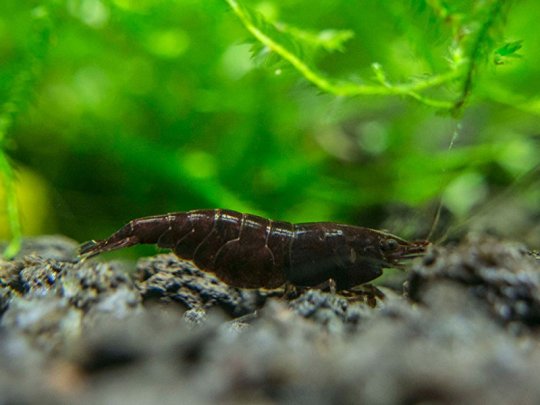
Colors may differ from a good light pink to deep blood red and with good selective breeding you can easily improve the intensity.
Keep your Red Cherry shrimp in a completely cycled aquarium of by least around five gallons (19L).
If you're interested in breeding your Cherries an individual species set up with only shrimp is preferred.
However, these shrimp do well in relaxing community setups also, as they breed rapidly and the casual casualty won't damage the populace at all.
Provide your Reddish Cherries with plenty of hiding places, especially in community tanks, and feed a top quality shrimp food.
You can discover a full Red Cherry shrimp caresheet at The Shrimp Farm here.
Amano shrimp (Caridina multidentata)
Amano shrimp are named after the later famous aquascaper Takashi Amano, who first introduce them into the aquarium hobby on a sizable scale.
Though colorless rather than too exciting to check out, these shrimp are being among the most famous because they're pretty hardy, have a huge appetite for algae and make a great cleaning crew.
They are a little bigger than dwarf shrimp but still entirely peaceful and an excellent addition to any tranquil community tank.
The simply downside is that they are almost impossible to breed in the home aquarium: they hatch as larvae which go through a brackish stage where they need a very particular amount of salt.
After that, they have to be returned to fresh water at exactly the proper time.
Keep your Amano shrimp in a heated and cycled aquarium of at least around ten gallons (38L). As with all shrimp, provide a good amount of hiding areas in the kind of plants, driftwood and rocks.
If there is a lot of algae for the shrimp to eat you don't need to supplement their diet plan all that substantially but be sure to will have some shrimp food on hand in case the algae go out.
You can discover a full Amano shrimp caresheet at The Shrimp Farm here.
Caridina Japonica Shrimp with eggs Caridina Japonica Shrimp with eggs by carolineccb
Blue Wish shrimp (Neocaridina davidi var. Blue)
Blue Dream shrimp certainly are a blue Neocaridina davidi variety: basically a blue version of Red Cherries.
Their care requirements are the same, they don't really need very specific water values and their impressive color makes them an excellent eyecatcher in any shrimp tank.
Like all shrimp they also make a good cleaning crew that keeps the aquarium tidy by eating leftover foods and algae.
They can be coupled with small, peaceful fish species (provided there are plenty of hiding places) but show themselves more and breed of dog more readily within an invert-only setup with snails and other shrimp.
There are plenty more Neocaridina davidi varieties out there, all of them simple to care for and an excellent breeding project for beginners.
Go for Blue Velvets if you are buying lighter blue color or possibly a bright Yellow! Simply don't incorporate these shrimp in a single aquarium; they do interbreed and any offspring will include a brownish wild color.

blue dream shrimp
Ghost shrimp (Palaemonetes sp.)
Ghost shrimp tend to be sold as cheap foodstuff for larger fish species but may also make an interesting everlasting addition to the aquarium.
They are upon this list because they are incredibly hardy and can tolerate bad water values much better than most other shrimp. A great option if you are just getting started!
'Ghost shrimp' is a good collective brand for various shrimp species found in the Palaemonetes genus, as a result be sure to buy from a reputable seller to avoid ending up with a huge aggressive river prawn or brackish variety.
The Shrimp Farm offers Palaemonetes paludosus, which doesn't grow too big and really should work fine in most cases. Keep your ghost shrimp in a cycled aquarium of at least around 10 gallons.
A tranquil community should work only fine (though bear in mind ghost shrimp can be slightly more aggressive than dwarf shrimp).
Ghost shrimp larvae are tiny and very vulnerable, so if you are interested in breeding and don't want the fresh to wrap up being eaten a good single-species setup could be the best idea.
Learn more info シュリンプ通販 Shrimp site
0 notes
Text
Which shrimp species are best for beginners? | 4 best starter shrimp
If you're just engaging in shrimp keeping it's rather a little difficult to determine which type to start out with.
There are therefore many species! So many colors, sizes and various requirements available.
Some are difficult to care for and some are a breeze. Luckily, The Shrimp Farm can help.
Keep reading to find out the 4 very best starter shrimp!
Crimson Cherry shrimp (Neocaridina davidi var. Red)
Crimson Cherry shrimp are probably the most popular dwarf shrimp among both newcomers and more experienced shrimp keepers.
And for good reason! This reddish Neocaridina variety isn't too fussy about normal water values, very easy to breed and quite ornamental.

Colors can vary from a light pink to deep blood vessels red and with smart selective breeding you may easily improve the intensity.
Keep your Reddish Cherry shrimp in a fully cycled aquarium of in least around five gallons (19L).
If you're considering breeding your Cherries a single species set up with only shrimp is preferred.
However, these shrimp do well in relaxing community setups also, as they breed rapidly and the casual casualty won't damage the population at all.
Provide your Crimson Cherries with lots of hiding places, especially in community tanks, and feed a high quality shrimp food.
You can find a full Red Cherry shrimp caresheet at The Shrimp Farm here.
Amano shrimp (Caridina multidentata)
Amano shrimp are named following the past due famous aquascaper Takashi Amano, who first introduce them into the aquarium hobby on a big scale.
Though colorless rather than too exciting to check out, these shrimp are among the most popular because they're pretty hardy, have a huge appetite for algae and produce an excellent cleaning crew.
They are a little bigger than dwarf shrimp but still entirely peaceful and a great addition to any calm community tank.
The only downside is they are almost impossible to breed in the house aquarium: they hatch as larvae which proceed through a brackish stage where they need a very specific amount of salt.
After that, they need to be returned to fresh water at specifically the right time.
Keep your Amano shrimp in a heated and cycled aquarium of by least around 10 gallons (38L). Much like all shrimp, provide lots of hiding places in the kind of plants, rocks and driftwood.
If there is a good amount of algae for the shrimp to consume you don't have to supplement their diet plan all that substantially but be certain to will have some shrimp food on hand in case the algae go out.
You can locate a full Amano shrimp caresheet at The Shrimp Farm here.
Caridina Japonica Shrimp with eggs Caridina Japonica Shrimp with eggs by carolineccb
Blue Dream shrimp (Neocaridina davidi var. Blue)
Blue Dream shrimp are a blue Neocaridina davidi variety: basically a blue version of Red Cherries.
Their care requirements are the same, they don't really need very specific water values and their impressive color makes them a great eyecatcher in any shrimp tank.
Like all shrimp in addition they make an excellent cleaning crew that keeps the aquarium tidy by eating leftover foods and algae.
They can be coupled with small, tranquil fish species (provided there are plenty of hiding places) but show themselves more and breed more readily within an invert-only setup with snails and other shrimp.
There are lots more Neocaridina davidi varieties out there, all of them easy to care for and an excellent breeding project for beginners.
Go for Blue Velvets if you're buying lighter blue color or possibly a bright Yellow! Only don't incorporate these shrimp in one aquarium; they carry out interbreed and any offspring will feature a brownish wild color.
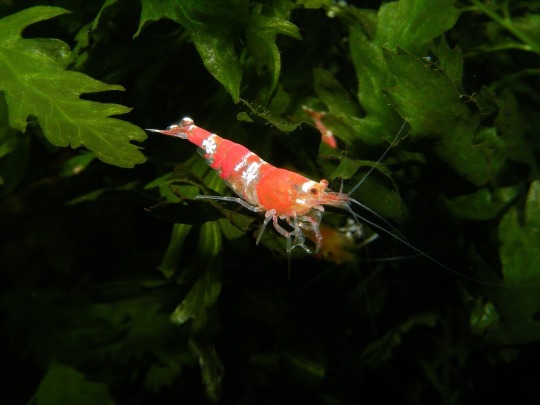
blue dream shrimp
Ghost shrimp (Palaemonetes sp.)
Ghost shrimp tend to be sold as cheap foodstuff for larger seafood species but may also make a great interesting long lasting addition to the aquarium.
They are upon this list because they're incredibly hardy and can tolerate bad water values much better than most other shrimp. A great option if you're just getting started!
'Ghost shrimp' is a collective brand for various shrimp species in the Palaemonetes genus, so be sure to buy from a reputable seller to avoid ending up with an enormous aggressive river prawn or brackish variety.
The Shrimp Farm markets Palaemonetes paludosus, which doesn't grow too large and really should work fine generally. Keep your ghost shrimp in a cycled aquarium of at least around 10 gallons.
A tranquil community should work only fine (though take into account ghost shrimp could be slightly more aggressive than dwarf shrimp).
Ghost shrimp larvae are actually tiny and incredibly vulnerable, so if you're interested found in breeding and do not want the small to conclude being eaten a good single-species setup could possibly be the best idea.
Find out more info シュリンプ通販 Shrimp site
0 notes
Text
Which shrimp species are best for beginners? | 4 best starter shrimp
If you're just getting into shrimp keeping it can be a little difficult to determine which type to get started on with.
There are consequently many species! So many colors, sizes and various requirements to select from.
Some are difficult to care for and some are super easy. Fortunately, The Shrimp Farm might help.
Keep reading to discover the 4 finest starter shrimp!
Red Cherry shrimp (Neocaridina davidi var. Red)
Red Cherry shrimp are most likely the most used dwarf shrimp among both beginners and more experienced shrimp keepers.
And for good reason! This reddish colored Neocaridina variety is not too fussy about normal water values, very easy to breed and quite ornamental.
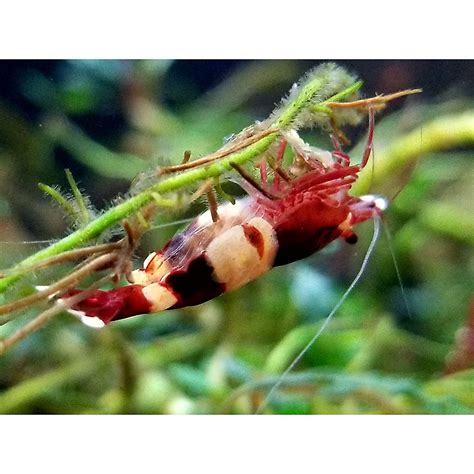
Colors can vary from a light pink to deep bloodstream red and with smart selective breeding you can certainly improve the intensity.
Keep your Reddish colored Cherry shrimp in a fully cycled aquarium of for least around five gallons (19L).
If you're thinking about breeding your Cherries a single species setup with only shrimp is recommended.
However, these shrimp also do well in relaxing community setups, as they breed rapidly and the occasional casualty won't damage the populace at all.
Provide your Red Cherries with lots of hiding places, especially in community tanks, and feed a high quality shrimp food.
You can look for a full Red Cherry shrimp caresheet at The Shrimp Farm here.
Amano shrimp (Caridina multidentata)
Amano shrimp are named after the past due famous aquascaper Takashi Amano, who first introduce them into the aquarium hobby on a large scale.
Though colorless rather than too exciting to look at, these shrimp are being among the most favorite because they are pretty hardy, have a huge appetite for algae and try to make a great cleaning crew.
They certainly are a little bigger than dwarf shrimp but nonetheless entirely peaceful and a great addition to any peaceful community tank.
The only downside is they are almost impossible to breed in the house aquarium: they hatch as larvae which proceed through a brackish stage where they desire a very specific amount of salt.
After that, they have to be returned to fresh water at exactly the right time.
Keep the Amano shrimp in a heated and cycled aquarium of in least around 10 gallons (38L). As with all shrimp, provide a lot of hiding places in the sort of plants, rocks and driftwood.
If there is plenty of algae for the shrimp to consume you don't need to supplement their diet all that substantially but be certain to will have some shrimp food readily available in case the algae run out.
You can locate a full Amano shrimp caresheet at The Shrimp Farm here.
Caridina Japonica Shrimp with eggs Caridina Japonica Shrimp with eggs by carolineccb
Blue Fantasy shrimp (Neocaridina davidi var. Blue)
Blue Dream shrimp are a blue Neocaridina davidi variety: basically a blue version of Red Cherries.
Their care requirements will be the same, they don't need very certain water values and their striking color makes them an excellent eyecatcher in virtually any shrimp tank.
Like all shrimp they also make a good cleaning crew that keeps the aquarium tidy by eating leftover foods and algae.
They can be combined with small, tranquil fish species (provided there are a sufficient amount of hiding places) but show themselves more and breed more readily in an invert-only setup with snails and other shrimp.
There are lots more Neocaridina davidi varieties out there, all of them easy to care for and a great breeding project for beginners.
Go for Blue Velvets if you are buying a lighter blue color or possibly a bright Yellow! Just don't combine these shrimp in one aquarium; they perform interbreed and any offspring will include a brownish wild color.

blue dream shrimp
Ghost shrimp (Palaemonetes sp.)
Ghost shrimp tend to be sold as cheap foodstuff for larger seafood species but can also make an interesting permanent addition to the aquarium.
They are on this list because they are incredibly hardy and can tolerate bad water values a lot better than most other shrimp. An excellent option if you're just getting started!
'Ghost shrimp' is a good collective brand for various shrimp species found in the Palaemonetes genus, as a result be sure to get from a reputable seller to avoid ending up with an enormous aggressive river prawn or brackish variety.
The Shrimp Farm sells Palaemonetes paludosus, which doesn't grow too large and really should work fine generally. Retain your ghost shrimp in a cycled aquarium of at least around 10 gallons.
A peaceful community should work only fine (though take into account ghost shrimp could be slightly considerably more aggressive than dwarf shrimp).
Ghost shrimp larvae are actually tiny and incredibly vulnerable, so if you're interested found in breeding and don't want the young to wrap up being eaten a good single-species setup may be the best idea.
Get more information info シュリンプ通販 Shrimp site
0 notes
Text
Which shrimp species are best for beginners? | 4 best starter shrimp
If you're just getting into shrimp keeping it's rather a little difficult to figure out which type to start with.
There are therefore many species! So many colors, sizes and various requirements available.
Some are difficult to look after and some are a breeze. Thankfully, The Shrimp Farm can help.
Keep reading to discover the 4 most effective starter shrimp!
Crimson Cherry shrimp (Neocaridina davidi var. Red)
Crimson Cherry shrimp are most likely the most used dwarf shrimp among both newcomers and more capable shrimp keepers.
And for good reason! This crimson Neocaridina variety isn't too fussy about drinking water values, very simple to breed and quite attractive.

Colors may differ from a light pink to deep blood red and with good selective breeding you can certainly improve the intensity.
Keep your Crimson Cherry shrimp in a fully cycled aquarium of for least around five gallons (19L).
If you're interested in breeding your Cherries an individual species setup with only shrimp is preferred.
However, these shrimp do well in calm community setups also, as they breed very quickly and the occasional casualty won't damage the populace at all.
Provide your Red Cherries with plenty of hiding places, in community tanks especially, and feed a top quality shrimp food.
You can find a full Red Cherry shrimp caresheet at The Shrimp Farm here.
Amano shrimp (Caridina multidentata)
Amano shrimp are named after the late famous aquascaper Takashi Amano, who introduce them into the aquarium hobby on a large scale first.
Though colorless rather than too exciting to check out, these shrimp are among the most favorite because they're pretty hardy, have a huge appetite for algae and help to make a great cleaning crew.
They are a little bigger than dwarf shrimp but still entirely peaceful and a great addition to any relaxing community tank.
The just downside is that they are almost impossible to breed of dog in the home aquarium: they hatch as larvae which go through a brackish stage where they desire a very particular amount of salt.
After that, they need to be returned to fresh water at accurately the right time.
Keep the Amano shrimp in a heated and cycled aquarium of by least around 10 gallons (38L). Much like all shrimp, provide a good amount of hiding spots in the kind of plants, driftwood and rocks.
If there is a good amount of algae for the shrimp to consume you don't have to supplement their diet plan all that much but be certain to always have some shrimp food on hand in case the algae run out.
You can locate a full Amano shrimp caresheet at The Shrimp Farm here.
Caridina Japonica Shrimp with eggs Caridina Japonica Shrimp with eggs by carolineccb
Blue Fantasy shrimp (Neocaridina davidi var. Blue)
Blue Dream shrimp certainly are a blue Neocaridina davidi variety: basically a blue version of Crimson Cherries.
Their care requirements are the same, they don't need very certain water values and their striking color makes them a great eyecatcher in virtually any shrimp tank.
Like all shrimp they also make an excellent cleaning crew that keeps the aquarium tidy by eating leftover foods and algae.
They can be combined with small, tranquil fish species (provided there are a sufficient amount of hiding places) but show themselves more and breed more readily in an invert-only setup with snails and other shrimp.
There are lots more Neocaridina davidi varieties out there, all of them simple to care for and a great breeding project for beginners.
Go for Blue Velvets if you're searching for a lighter blue color or possibly a bright Yellow! Only don't combine these shrimp in a single aquarium; they do interbreed and any offspring will feature a brownish wild color.
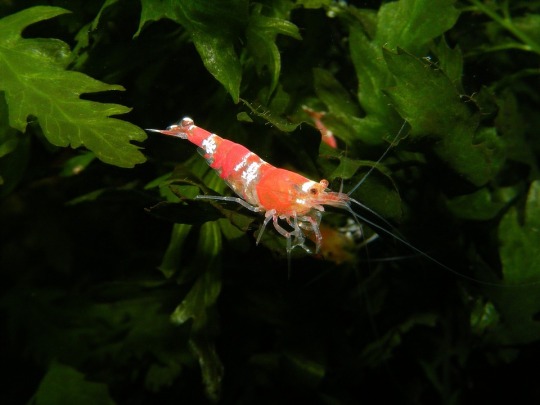
blue dream shrimp
Ghost shrimp (Palaemonetes sp.)
Ghost shrimp tend to be sold as cheap foodstuff for larger fish species but can also make a great interesting long lasting addition to the aquarium.
They are on this list because they are incredibly hardy and will tolerate bad water values much better than most other shrimp. A great option if you're just getting started!
'Ghost shrimp' is a good collective name for various shrimp species in the Palaemonetes genus, so be sure to buy from an established seller to avoid ending up with an enormous aggressive river prawn or perhaps brackish variety.
The Shrimp Farm offers Palaemonetes paludosus, which doesn't grow too large and should work fine in most cases. Maintain your ghost shrimp in a cycled aquarium of at least around 10 gallons.
A tranquil community should work just fine (though bear in mind ghost shrimp could be slightly even more aggressive than dwarf shrimp).
Ghost shrimp larvae are tiny and very vulnerable, so if you are interested in breeding and do not want the fresh to finish up being eaten a single-species setup may be the best idea.
Learn more info シュリンプ Shrimp
0 notes
Text
Which shrimp species are best for beginners? | 4 best starter shrimp
If you're just engaging in shrimp keeping it can be a little difficult to figure out which type to get started on with.
There are therefore many species! So many colors, sizes and different requirements to choose from.
Some are difficult to look after and some are super easy. Luckily, The Shrimp Farm might help.
Keep reading to find out the 4 very best starter shrimp!
Crimson Cherry shrimp (Neocaridina davidi var. Red)
Red Cherry shrimp are probably the most used dwarf shrimp among both beginners and more experienced shrimp keepers.
And for good reason! This crimson Neocaridina variety isn't too fussy about normal water values, very simple to breed and quite ornamental.

Colors can vary from a light pink to deep blood red and with smart selective breeding you can easily improve the intensity.
Keep your Reddish Cherry shrimp in a completely cycled aquarium of by least around five gallons (19L).
If you're enthusiastic about breeding your Cherries an individual species setup with only shrimp is preferred.
However, these shrimp do well in relaxing community setups also, as they breed very quickly and the casual casualty won't damage the population at all.
Provide your Reddish Cherries with a good amount of hiding places, in community tanks especially, and feed a high quality shrimp food.
You can find a full Red Cherry shrimp caresheet at The Shrimp Farm here.
Amano shrimp (Caridina multidentata)
Amano shrimp are named following the late famous aquascaper Takashi Amano, who first introduce them into the aquarium hobby on a large scale.
Though colorless rather than too exciting to check out, these shrimp are among the most popular because they're pretty hardy, have an enormous appetite for algae and help to make a great cleaning crew.
They are a little bigger than dwarf shrimp but nonetheless entirely peaceful and an excellent addition to any calm community tank.
The just downside is they are almost impossible to breed in the house aquarium: they hatch as larvae which go through a brackish level where they need a very particular amount of salt.
After that, they need to be returned to fresh water at exactly the right time.
Keep your Amano shrimp in a heated and cycled aquarium of in least around 10 gallons (38L). Much like all shrimp, provide lots of hiding places in the kind of plants, rocks and driftwood.
If there is a lot of algae for the shrimp to eat you don't have to supplement their diet plan all that substantially but make sure to will have some shrimp food readily available in case the algae go out.
You can locate a full Amano shrimp caresheet at The Shrimp Farm here.
Caridina Japonica Shrimp with eggs Caridina Japonica Shrimp with eggs by carolineccb
Blue Desire shrimp (Neocaridina davidi var. Blue)
Blue Dream shrimp are a blue Neocaridina davidi variety: basically a blue version of Red Cherries.
Their care requirements will be the same, they don't really need very particular water values and their striking color makes them an excellent eyecatcher in any shrimp tank.
Like all shrimp in addition they make a good cleaning crew that keeps the aquarium tidy by eating leftover foods and algae.
They can be coupled with small, relaxing fish species (provided there are enough hiding places) but show themselves more and breed more readily within an invert-only setup with snails and other shrimp.
There are more Neocaridina davidi varieties out there plenty, all of them simple to care for and a great breeding project for beginners.
Go for Blue Velvets if you are buying a lighter blue color or possibly a bright Yellow! Just don't incorporate these shrimp in a single aquarium; they carry out interbreed and any offspring will feature a brownish wild color.
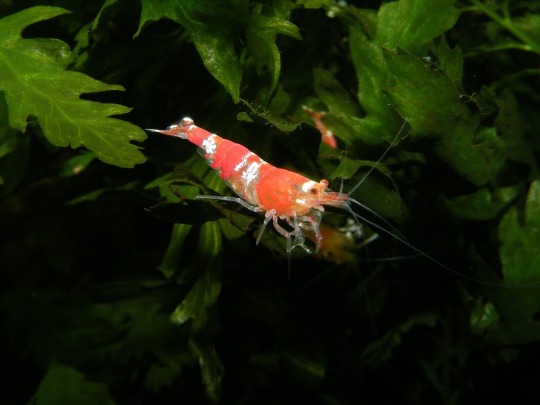
blue dream shrimp
Ghost shrimp (Palaemonetes sp.)
Ghost shrimp tend to be sold as cheap food for larger seafood species but may also make a great interesting long term addition to the aquarium.
They are upon this list because they're incredibly hardy and will tolerate bad water values much better than most other shrimp. A great option if you are just getting started!
'Ghost shrimp' is a collective name for various shrimp species in the Palaemonetes genus, so be sure to purchase from a reputable seller to avoid finding yourself with a huge aggressive river prawn or brackish variety.
The Shrimp Farm sells Palaemonetes paludosus, which doesn't grow too large and should work fine generally. Maintain your ghost shrimp in a cycled aquarium of at least around 10 gallons.
A peaceful community should work simply fine (though keep in mind ghost shrimp can be slightly considerably more aggressive than dwarf shrimp).
Ghost shrimp larvae are tiny and incredibly vulnerable, so if you're interested found in breeding and don't want the small to finish up being eaten a single-species setup may be the best idea.
Find out more info シュリンプ通販 Shrimp site
0 notes
Text
Which shrimp species are best for beginners? | 4 best starter shrimp
If you're just getting into shrimp keeping it's rather a little difficult to determine which type to begin with.
There are hence many species! So many colors, sizes and various requirements from which to choose.
Some are difficult to look after and some are super easy. Luckily, The Shrimp Farm might help.
Keep reading to discover the 4 finest starter shrimp!
Crimson Cherry shrimp (Neocaridina davidi var. Red)
Crimson Cherry shrimp are probably the most famous dwarf shrimp among both starters and more experienced shrimp keepers.
And for good reason! This reddish colored Neocaridina variety isn't too fussy about drinking water values, very easy to breed and quite ornamental.
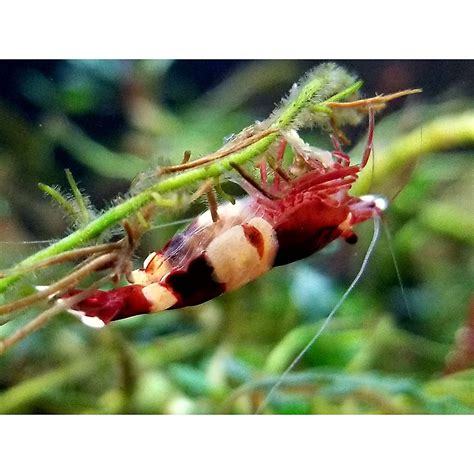
Colors may differ from a light pink to deep blood vessels red and with good selective breeding you can easily improve the intensity.
Keep your Reddish colored Cherry shrimp in a completely cycled aquarium of for least around five gallons (19L).
If you're enthusiastic about breeding your Cherries an individual species set up with only shrimp is recommended.
However, these shrimp do well in calm community setups also, as they breed very quickly and the occasional casualty won't damage the populace at all.
Provide your Crimson Cherries with plenty of hiding places, in community tanks especially, and feed a top quality shrimp food.
You can discover a full Red Cherry shrimp caresheet at The Shrimp Farm here.
Amano shrimp (Caridina multidentata)
Amano shrimp are named after the later famous aquascaper Takashi Amano, who introduce them into the aquarium hobby on a huge scale first.
Though colorless rather than too exciting to look at, these shrimp are being among the most common because they are pretty hardy, have a huge appetite for algae and try to make an excellent cleaning crew.
They are a little larger than dwarf shrimp but still entirely peaceful and an excellent addition to any relaxing community tank.
The simply downside is that they are almost impossible to breed in the house aquarium: they hatch as larvae which proceed through a brackish stage where they desire a very specific amount of salt.
After that, they need to be returned to fresh water at exactly the right time.
Keep the Amano shrimp in a heated and cycled aquarium of at least around ten gallons (38L). Much like all shrimp, provide a lot of hiding places in the type of plants, rocks and driftwood.
If there is lots of algae for the shrimp to eat you don't have to supplement their diet plan all that very much but be certain to always have some shrimp food readily available in case the algae run out.
You can find a full Amano shrimp caresheet at The Shrimp Farm here.
Caridina Japonica Shrimp with eggs Caridina Japonica Shrimp with eggs by carolineccb
Blue Wish shrimp (Neocaridina davidi var. Blue)
Blue Dream shrimp are a blue Neocaridina davidi variety: basically a blue version of Red Cherries.
Their care requirements will be the same, they don't really need very particular water values and their striking color makes them an excellent eyecatcher in any shrimp tank.
Like all shrimp they also make an excellent cleaning crew that keeps the aquarium tidy by eating leftover foods and algae.
They can be combined with small, peaceful fish species (provided there are more than enough hiding places) but show themselves more and breed more readily within an invert-only setup with snails and other shrimp.
There are lots more Neocaridina davidi varieties out there, all of them simple to care for and an excellent breeding project for beginners.
Go for Blue Velvets if you are looking for a lighter blue color or maybe a bright Yellow! Only don't incorporate these shrimp in one aquarium; they perform interbreed and any offspring will include a brownish wild color.

blue dream shrimp
Ghost shrimp (Palaemonetes sp.)
Ghost shrimp tend to be sold as cheap foodstuff for larger fish species but can also make a great interesting long term addition to the aquarium.
They are on this list because they're incredibly hardy and will tolerate bad water values a lot better than most other shrimp. An excellent option if you're just getting started!
'Ghost shrimp' is a collective name for various shrimp species in the Palaemonetes genus, as a result be sure to buy from an established seller to avoid ending up with a huge aggressive river prawn or brackish variety.
The Shrimp Farm offers Palaemonetes paludosus, which doesn't grow too big and really should work fine generally. Retain your ghost shrimp in a cycled aquarium of at least around 10 gallons.
A relaxing community should work only fine (though take into account ghost shrimp can be slightly considerably more aggressive than dwarf shrimp).
Ghost shrimp larvae are tiny and very vulnerable, so if you're interested found in breeding and do not want the small to wrap up being eaten a single-species setup may be the best idea.
Get more information info シュリンプ Shrimp
0 notes
Text
Which shrimp species are best for beginners? | 4 best starter shrimp
If you're just getting into shrimp keeping it's rather a little difficult to determine which type to start with.
There are consequently many species! So various colors, sizes and different requirements available.
Some are difficult to look after and some are a breeze. Thankfully, The Shrimp Farm can help.
Keep reading to determine the 4 most effective starter shrimp!
Red Cherry shrimp (Neocaridina davidi var. Red)
Crimson Cherry shrimp are probably the most used dwarf shrimp among both newbies and more experienced shrimp keepers.
And for good reason! This crimson Neocaridina variety is not too fussy about normal water values, very simple to breed and quite attractive.

Colors can vary from a good light pink to deep blood vessels red and with smart selective breeding you may easily improve the intensity.
Keep your Reddish colored Cherry shrimp in a completely cycled aquarium of at least around five gallons (19L).
If you're thinking about breeding your Cherries a single species setup with only shrimp is recommended.
However, these shrimp do well in peaceful community setups also, as they breed rapidly and the casual casualty won't damage the populace at all.
Provide your Crimson Cherries with lots of hiding places, in community tanks especially, and feed a top quality shrimp food.
You can locate a full Red Cherry shrimp caresheet at The Shrimp Farm here.
Amano shrimp (Caridina multidentata)
Amano shrimp are named following the late famous aquascaper Takashi Amano, who first introduce them into the aquarium hobby on a huge scale.
Though colorless and not too exciting to look at, these shrimp are among the most famous because they're pretty hardy, have an enormous appetite for algae and produce an excellent cleaning crew.
They are a little larger than dwarf shrimp but nonetheless entirely peaceful and an excellent addition to any tranquil community tank.
The just downside is they are almost impossible to breed in the home aquarium: they hatch as larvae which proceed through a brackish level where they need a very specific amount of salt.
After that, they need to be returned to fresh water at specifically the right time.
Keep your Amano shrimp in a heated and cycled aquarium of in least around 10 gallons (38L). As with all shrimp, provide plenty of hiding locations in the type of plants, rocks and driftwood.
If there is a lot of algae for the shrimp to eat you don't need to supplement their diet plan all that very much but be sure to will have some shrimp food readily available in case the algae run out.
You can look for a full Amano shrimp caresheet at The Shrimp Farm here.
Caridina Japonica Shrimp with eggs Caridina Japonica Shrimp with eggs by carolineccb
Blue Dream shrimp (Neocaridina davidi var. Blue)
Blue Dream shrimp certainly are a blue Neocaridina davidi variety: basically a blue version of Red Cherries.
Their care requirements are the same, they don't need very certain water values and their impressive color makes them an excellent eyecatcher in virtually any shrimp tank.
Like all shrimp they also make a good cleaning crew that keeps the aquarium tidy by eating leftover foods and algae.
They can be combined with small, tranquil fish species (provided there are enough hiding places) but show themselves more and breed of dog more readily within an invert-only setup with snails and other shrimp.
There are more Neocaridina davidi varieties out there plenty, all of them easy to care for and an excellent breeding project for beginners.
Go for Blue Velvets if you are buying a lighter blue color or maybe a bright Yellow! Just don't incorporate these shrimp in a single aquarium; they perform interbreed and any offspring will feature a brownish wild color.

blue dream shrimp
Ghost shrimp (Palaemonetes sp.)
Ghost shrimp are often sold as cheap meals for larger fish species but may also make an interesting permanent addition to the aquarium.
They are on this list because they are incredibly hardy and can tolerate bad water values much better than most other shrimp. A great option if you are just getting started!
'Ghost shrimp' is a collective name for various shrimp species in the Palaemonetes genus, as a result be sure to purchase from an established seller to avoid finding yourself with an enormous aggressive river prawn or brackish variety.
The Shrimp Farm sells Palaemonetes paludosus, which doesn't grow too large and should work fine in most cases. Maintain your ghost shrimp in a cycled aquarium of at least around 10 gallons.
A calm community should work simply fine (though take into account ghost shrimp can be slightly even more aggressive than dwarf shrimp).
Ghost shrimp larvae are tiny and very vulnerable, so if you're interested in breeding and do not want the fresh to finish up being eaten a good single-species setup could be the best idea.
Get more information info シュリンプ Shrimp
0 notes